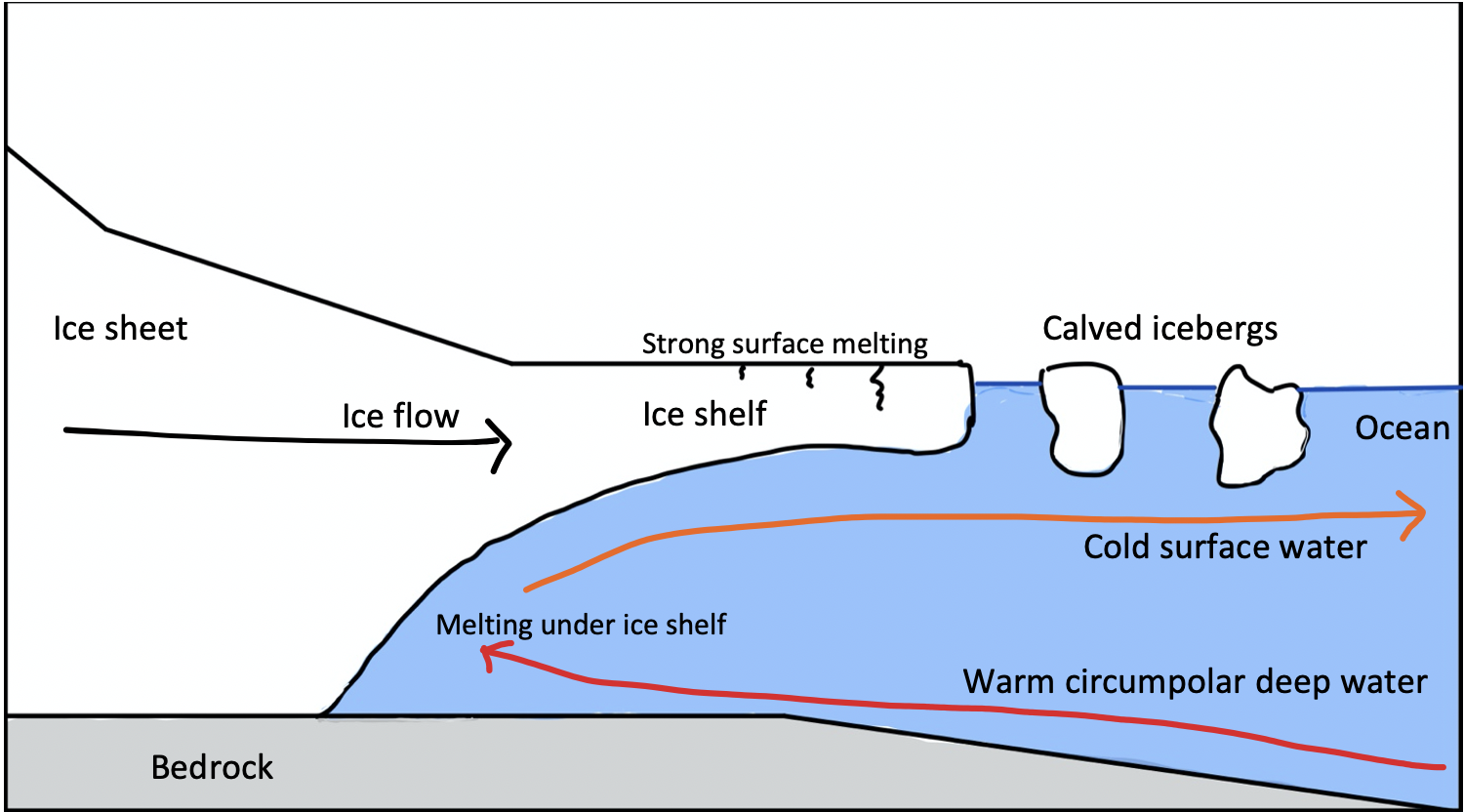In September 2019, the Amery Ice Shelf in Antarctica produced its biggest iceberg, which beat the record 50 years ago. The massive iceberg named D-28 covers an area of 1,636 sq km, which is slightly more than half of the Metro Vancouver area. It is about 210 m thick and contains 315 billion-tonne of ice.

Iceberg D-28 breaks away from the Amery Ice Shelf. Credit: ESA
The cause of iceberg D-28 calving?
As a matter of fact, global warming, caused by greenhouse-gasses emission, has contributed to ice melting around the world. It is interesting to note that the calving of D-28 was a part of the normal cycle of ice shelves.
Firstly, glacier gradually moves toward the ocean by its own weight. As the glacier flow, the friction with the bedrock and surface melting thinning the ice sheets and form ice shelves, which are the arm of the ice sheet. Moreover, the warm circumpolar deep water flows in and melts the ice under the ice shelf that weakening its strength. Thus, the plane of ice starts splitting and shedding into icebergs.

Formation of icebergs. Credit: Calvin Pan
Climatic impacts of the iceberg
Melting icebergs influence both global sea levels and ocean salinity. If iceberg D-28 completely melted, researchers projected that sea volume would increase by 2.6 % compared to the volume of saltwater that was displaced. Annually, the global sea level is rising by about 3 mm, whereas the melting of D-28 only accounts for 0.049 mm of increase per year. As such, an individual iceberg would not dramatically raise the sea level. In considering the ocean salinity, indeed, the melted ice would dilute the salt concentration in the ocean and decline its salinity. This process usually occurs at lower latitudes when the iceberg melts. Nevertheless, at higher latitudes (eg, near where the iceberg breaks off), seawater is frozen by nearby icebergs, and its freezing process increases the salinity. The stabilizing influence on ocean salinity promotes the convection and circulation of oceanic currents.
Will climate change alter the Antarctic landscape?
Yes, climate change will accelerate the loss of Antarctic glaciers due to various reasons. For example, warmer sea, higher air temperatures, and higher sea levels fasten the natural cycle of ice shelves. Watch this short video made by Vox to understand the association between glaciers loss and climate change using the example of Thwaites Glacier, as well as possible consequences.
A study has proposed that reducing greenhouse-gas emissions could possibly mitigate the rate of change in Antarctica. Losing antarctic ice will not only raise the sea level but also threaten wildlife and food security because of more frequent extreme weather. Before dealing with an irreversible change in Antarctica, we must start thinking of how we can save the Antarctic ecosystem.
-Calvin Pan
